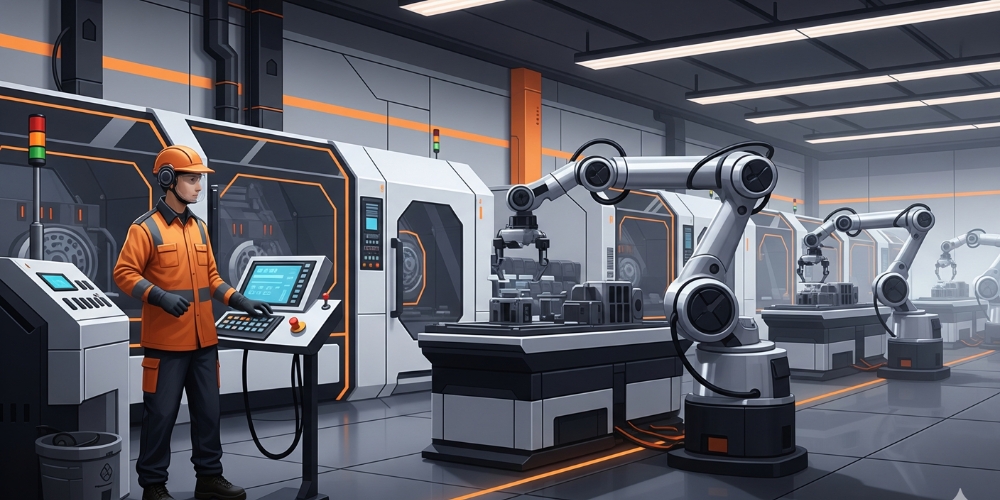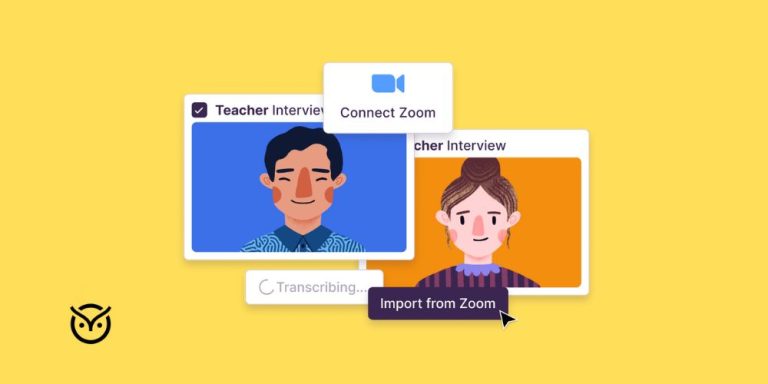What Recruiters Wish Candidates Knew About the Candidate Selection Process

TL;DR
- The candidate selection process moves in clear steps from screening to hiring.
- The employee selection process now includes AI hiring trends and digital filters.
- Knowing human resources hiring procedures helps with the staff hiring process.
- Align with hiring criteria to excel in the selection and interview stage.
- The human resource selection process is structured and fair.
- Use methods of recruitment and recruiting tips for finding better candidates.
Getting hired often feels like trying to navigate a maze. Candidates wonder what is the candidate selection process, and face uncertainty around the hiring criteria or the staff hiring process. The confusion isn’t just about interviews. It’s about knowing that the first step in the employee selection process is often the least obvious part, whether it’s submitting a resume through an ATS or beating AI filters before human eyes even see your profile.
This blog will unpack the candidate selection process, and you will learn what recruiters are looking for, what common pitfalls trip up applicants, and actionable ways to improve your odds. By the end, you’ll get a clearer view of how to navigate human resources hiring procedures, selection, and interviews, and even new AI hiring trends and methods of recruitment that change the game.
Myth or Fact
The Candidate Selection Process in a Nutshell

Let’s break down the candidate selection process, or, put another way, what is the candidate selection process into a few core stages that most organizations follow. This gives you a practical path to follow, not just guesswork.
- Sourcing and Attraction
This is where the process of attracting qualified job applicants is called sourcing. Recruiters might post on job boards, tap networks, or engage in methods of recruitment like employee referrals, social media, or job fairs.
- Application and Screening
Once applications arrive, they enter the pre employment process through tools like ATS. This is where many candidates expect to be filtered out, especially if their resume doesn’t align with HR recruitment and selection keywords or format standards.
- Assessment and Shortlisting
Recruiters use selection tools for hiring, such as tests, work samples, or AI-driven screenings, to evaluate fit. That’s why a hiring process example that includes tests or tasks isn’t unusual anymore. This stage weeds out unfit applicants and moves the most relevant ones to the next level.
- Interviews and Evaluation
The selection and interview stage is where human insight comes in. Whether it’s phone, video, or in-person, recruiters are checking both skills and your fit with company culture. This is your chance to demonstrate proof of practice, teamwork, and how you think. These traits are often weighed alongside credentials.
- Decision and Offer
Decision-making often involves multiple people and may follow human resource selection process guidelines or employee selection process policies. Offers usually follow if all goes well. This is also where hiring criteria like experience, potential, culture fit, or metrics are solidified.
- Onboarding
After the offer, the stage job application turns into onboarding, where HR helps you settle in. The selection process in progress, Kaiser or similar programs, offer structured onboarding, depending on the company.
What Recruiters Wish Candidates Knew About the Candidate Selection Process

Recruiters often wish candidates understood how the candidate selection process works from the inside. Here are ten insights they wish every job seeker kept in mind:
- The process takes time
The employee selection process is not instant. Research shows it takes an average of 44 days to fill a position, and in tech roles, it can stretch to over 50. Delays don’t always mean rejection. They usually mean multiple layers of review are still in motion.
- Screening is automated
The first step in the employee selection process is often a resume scan by software, not a human. Applicant Tracking Systems (ATS) are now a core part of human resources hiring procedures, and resumes are filtered for keywords long before a recruiter ever sees them.
- Selection is structured, not random
Recruiters rely on clear selection tools for hiring, such as structured interviews, work samples, and scoring rubrics. This makes the process more consistent. As one recruiter put it: “Selection is an objective process, not guesswork.”
- Skills can outweigh degrees
Companies are embracing skills-based hiring, where ability and potential matter more than formal qualifications. For example, 76% of employers now use skills tests to identify talent.
- AI is part of the process
From resume parsing to video interview screening, AI hiring trends are reshaping how recruiters manage the human resource selection process. These tools speed things up, but also mean candidates must keep their resumes clear, well-formatted, and free from jargon.
- Recruiter time is limited
With 72% of employers reporting difficulty finding qualified candidates, recruiters juggle a heavy load. Short and relevant applications get noticed faster than generic ones.
- Job stages vary
The stage job application process isn’t identical across companies. Some roles require assessments or case studies, while others begin with a phone screen.
- Generic resumes hurt you
Recruiters use multiple methods of recruitment, such as job boards, referrals, and social media. Since they see hundreds of applicants, generic resumes are easy to dismiss. Personalization signals effort and fit.
- Very few make it to interviews
Out of hundreds of applications, only about 3% move to interviews, and just 27% of those get hired. The staff hiring process is highly competitive, which makes standing out crucial.
- Hiring decisions involve multiple voices
Candidates often assume recruiters hold the final say. In reality, HR recruitment and selection teams do the filtering, but hiring managers and team leads often make the decision. Understanding this helps tailor your communication to both HR and potential colleagues.
Recruiter’s Inbox
Click a row (or press Enter/Space) to see why it’s shortlisted or rejected. Use the filters to focus.
-
Why: Broad summary, no proof of outcomes, missing role-specific terms for the ATS.
- Add role keywords that match the post.
- Replace duties with results and metrics.
- Keep format simple for scanners.
-
Why: Matches hiring criteria, mirrors job keywords, gives outcomes with numbers.
- Keep bullets tight and outcome-focused.
- Mirror language from the job post.
- Link to portfolio or campaign samples.
-
Why: Code samples missing; links 404. Can’t verify skills.
- Add a repo or live demos.
- Test links and make access public.
- Show 2–3 best projects first.
-
Why: Dense jargon and long blocks. Recruiter can’t see the signal fast.
- Use plain language and short lines.
- Lead with numbers and impact.
- Keep formatting consistent.
-
Why: Skills mapped to the role, clean visuals, links to dashboards.
- Add one-line context for each sample.
- Show before/after metrics.
- Keep file names tidy and readable.
How Candidates Can Improve Their Chances in the Selection Process

Now that you know what recruiters wish you understood, the question becomes: how do you get hired? Improving your odds in the candidate selection process requires practical steps, not guesswork.
Study the process
The human resources hiring procedures typically include sourcing, screening, assessment, interviews, and final decision-making. By knowing which steps are typically included in the personnel selection process, you can anticipate what’s coming next.
Tailor every application
Instead of using one generic resume, align your application with the specific hiring criteria in the job posting. Recruiters quickly spot vague summaries. Clear, targeted resumes that echo the language of the role are more likely to pass both ATS and human review.
Showcase your skills
The shift to skills-based hiring means you should highlight certifications, portfolios, and measurable results. During the pre employment process, recruiters want proof of what you can do, not just a list of past duties. Focus on outcomes that show your impact.
Work with technology, not against it
Since AI systems screen resumes, keep layouts simple. Avoid images, unnecessary tables or unusual fonts. This ensures your resume isn’t rejected before reaching a recruiter.
Prepare for assessments
Some organizations use role-specific exercises or assessment centers as part of the staff hiring process. These test problem-solving, teamwork, and communication. Practicing similar tasks can help you feel confident.
Use your network
Referrals remain one of the strongest methods of recruitment. Employees who come recommended are four times more likely to get hired compared to non-referrals. Networking is a proven edge.
Communicate professionally
Whether it’s emails, LinkedIn messages, or cover letters, clarity counts. Following instructions in job postings, like attaching documents in the right format, shows attention to detail and respect for the process.
Follow up without pushing
A short, polite check-in after an interview or when the selection process is in progress feels long can demonstrate enthusiasm. Recruiters appreciate interest without pressure.
Ace the interview stage
Strong candidates prepare for the selection and interview stages by practicing behavior-based questions. Sharing specific stories of challenges solved or goals achieved gives substance to your answers.
Stay adaptable
New AI hiring trends and shifting expectations mean the landscape changes quickly. By keeping pace with recruiting tips for finding better candidates and industry news, you can adjust how you present yourself in applications and interviews.
Level Up Ladder Quiz
Answer questions correctly to climb the career ladder!
What’s the best way to beat ATS filters?
What’s stronger: referrals or cold job board apps?
Which shows more value to recruiters?
Common Misconceptions Candidates Have About Recruiters

Despite all the resources available online, candidates still hold on to certain myths about how the candidate selection process works. These misunderstandings create unnecessary frustration and, in some cases, cost people opportunities. Here are the most common misconceptions:
“Recruiters decide who gets hired.”
A widespread belief is that recruiters have the final word. In reality, the human resource selection process usually places recruiters in a filtering and coordination role. They manage resumes, guide the selection and interview stages, and ensure the human resources hiring procedures are followed, but the ultimate decision often comes from hiring managers or team leads.
“Recruiters ignore candidates after applying.”
Many applicants assume silence equals disinterest. What they don’t realize is that the selection is an objective process with multiple layers, such as resume screening, assessments, panel interviews, and reference checks. With each vacancy attracting hundreds of applications, communication lags don’t always mean you’re out of the running.
“Recruiters only care about experience.”
This myth is fading fast. With the rise of skills-based hiring and modern selection tools for hiring, potential and problem-solving ability are valued alongside work history. In fact, several studies show that companies adopting skills-first approaches reduce hiring bias and widen talent pools (World Economic Forum).
“Recruiters don’t value entry-level talent.”
The truth is, many industries build pipelines through graduate programs, internships, and apprenticeships. The pre employment process is designed to spot potential. Employers know fresh candidates can bring adaptability, energy, and digital-native skills.
“The staff hiring process is the same everywhere.”
No two companies are identical. Some emphasize technical testing in their employee selection process while others prioritize culture-fit interviews. Global firms may run multiple stage job application rounds while smaller businesses move straight from resume to interview.
By clearing these misconceptions, candidates can approach the personnel selection process with confidence rather than doubt.
Conclusion
The candidate selection process can feel like a black box from the outside, but once you understand its structure, it becomes far less intimidating. Recruiters aren’t gatekeepers trying to block you. They’re professionals balancing HR recruitment and selection demands with the expectations of managers, while also navigating modern tools like AI-driven screening.
For candidates, success lies in preparation. That means tailoring applications to hiring criteria, practicing for interviews, and recognizing that the staff hiring process takes time. More importantly, it means treating every step from resume submission to final interview as a chance to demonstrate value.
FAQs
Click a question to expand.
It varies by industry and role. While some companies can make offers in two to three weeks, others especially in specialized sectors may take longer due to multiple interview rounds, assessments, or background checks.
Recruiters often manage large applicant volumes. Legal considerations, time limits, and workload mean detailed feedback isn’t always possible, even if they’d like to provide it.
Recruiters guide the HR recruitment and selection process, but hiring managers and sometimes teams make the final call. Recruiters facilitate, but they don’t decide alone.
Both matter, but potential is becoming more important. Employers are increasingly adopting hiring criteria that weigh problem-solving skills, adaptability, and cultural fit as heavily as years of experience.






